 Clothing and light are just two of a cluster of symbols that are at play in the Catholic rites of initiation and of farewell. Continue reading “A Garment and A Lighted Candle – A Long View”
Clothing and light are just two of a cluster of symbols that are at play in the Catholic rites of initiation and of farewell. Continue reading “A Garment and A Lighted Candle – A Long View”
Pauline Clayton Sculptor (10 July 1944 — 3 October 2012)
 Pauline Clayton worked as a sculptor in Melbourne and her works are featured in various institutions, including St Francis’ Church, Lonsdale Street, and schools, including Catholic Ladies College, Eltham. In addition to juggling the responsibilities of marriage, helping to raise three children and teaching, Pauline undertook art classes at the Royal Melbourne Institute of Technology (RMIT) and taught art and sculpture in secondary schools, including Geoghegan College, Broadmeadows and Genazzano fcj College, Kew, VIC. Continue reading “Pauline Clayton Sculptor (10 July 1944 — 3 October 2012)”
Pauline Clayton worked as a sculptor in Melbourne and her works are featured in various institutions, including St Francis’ Church, Lonsdale Street, and schools, including Catholic Ladies College, Eltham. In addition to juggling the responsibilities of marriage, helping to raise three children and teaching, Pauline undertook art classes at the Royal Melbourne Institute of Technology (RMIT) and taught art and sculpture in secondary schools, including Geoghegan College, Broadmeadows and Genazzano fcj College, Kew, VIC. Continue reading “Pauline Clayton Sculptor (10 July 1944 — 3 October 2012)”
Peter Schipperheyn – Stations of the Cross
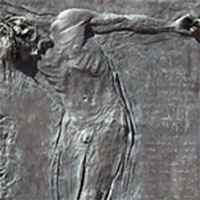 Bronze sculptures (c. 2000)
Bronze sculptures (c. 2000)
University of Notre Dame, Freemantle, Western Australia
The 14 Stations of the Cross by Australian sculptor Peter Schipperheyn were commissioned around the year 2000 for the University of Notre Dame, Freemantle, Western Australia. Continue reading “Peter Schipperheyn – Stations of the Cross”
Leopoldine Mimovich – Immigrant Artist
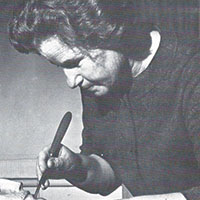 In the aftermath of World War II thousands of displaced persons from Europe sought a new home in Australia. They came bringing a diverse array of talents to the arts thus contributing to a new and unique artistic sensibility in this country. In time, a flourishing of art, literature, drama and music emerged. One of these immigrant artists was the young sculptor Leopoldine Mimovich. Continue reading “Leopoldine Mimovich – Immigrant Artist”
In the aftermath of World War II thousands of displaced persons from Europe sought a new home in Australia. They came bringing a diverse array of talents to the arts thus contributing to a new and unique artistic sensibility in this country. In time, a flourishing of art, literature, drama and music emerged. One of these immigrant artists was the young sculptor Leopoldine Mimovich. Continue reading “Leopoldine Mimovich – Immigrant Artist”
Translucence of Light
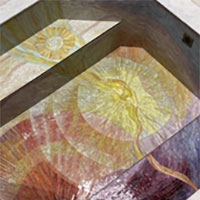 The inspiration of St Francis Xavier Cathedral in Geraldton, Western Australia, considered by some as one of the finest cathedrals built in the 20th century[i], can be found in the Arts and Crafts Movement of the late 19th and early 20th centuries. Among the principles of the Arts Crafts Movement is engagement of local builders, artists and crafts persons in the construction and decoration of buildings and the use of vernacular materials. Continue reading “Translucence of Light”
The inspiration of St Francis Xavier Cathedral in Geraldton, Western Australia, considered by some as one of the finest cathedrals built in the 20th century[i], can be found in the Arts and Crafts Movement of the late 19th and early 20th centuries. Among the principles of the Arts Crafts Movement is engagement of local builders, artists and crafts persons in the construction and decoration of buildings and the use of vernacular materials. Continue reading “Translucence of Light”
L. Peter Kollar: Architect and Revered Educator (1926-2000)
 As a refugee from political suppression in his native Hungary, in 1949 a young architect escaped by making his way through the snows of the European winter camouflaged in a white sheet. After a long and arduous journey, he eventually arrived in Australia where he was to become one of the most influential identities in Australian architecture. Continue reading “L. Peter Kollar: Architect and Revered Educator (1926-2000)”
As a refugee from political suppression in his native Hungary, in 1949 a young architect escaped by making his way through the snows of the European winter camouflaged in a white sheet. After a long and arduous journey, he eventually arrived in Australia where he was to become one of the most influential identities in Australian architecture. Continue reading “L. Peter Kollar: Architect and Revered Educator (1926-2000)”
Natasha – a personal reflection
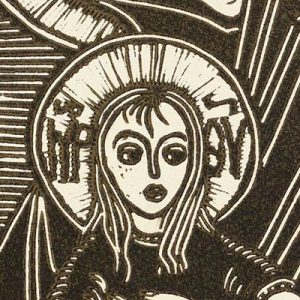
When first saw this piece in the early 90s, I was also exploring the Catholic faith. The imagery of an icon was immediately recognisable and arresting. The simplicity of rendering in apparent monotone and the animation of the child I found appealing. It represented for me a gentle welcome into a faith community that has since become my spiritual home. It also became a vehicle for a line of enquiry into my place in the Church and that of women in general. Continue reading “Natasha – a personal reflection”
BOOK REVIEW: Richard Vosko, Art and Architecture for Congregational Worship: The Search for a Common Ground
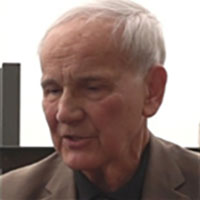 (Collegeville, Liturgical Press, 2019) 236 pages.
(Collegeville, Liturgical Press, 2019) 236 pages.
Richard Vosko was in Australia in February 2019 as keynote speaker at the National Liturgical Architecture and Art Council’s symposium Where Your Treasure Is, There Will Your Heart Be Also: Catholic Liturgical Heritage. Those who met him there will be keen to read this development of his input. Those who did not meet him have the opportunity to make his acquaintance through this book. Continue reading “BOOK REVIEW: Richard Vosko, Art and Architecture for Congregational Worship: The Search for a Common Ground”
ROGER KEMP, the CIRCLE and the SQUARE
 “His glimpses of the ineffable are translated to us in terms of dancing, for his paintings are a choreography of the spirit – but the dancing is never extravagant. It has the formal quality of a saraband. Every movement, every gesture, every brushstroke becomes part of a ritual.”
“His glimpses of the ineffable are translated to us in terms of dancing, for his paintings are a choreography of the spirit – but the dancing is never extravagant. It has the formal quality of a saraband. Every movement, every gesture, every brushstroke becomes part of a ritual.”
James Gleeson, review in Sydney’s Sun, 14 June 1967.
Altyerre – Catholicism’s Sacred Dancing Ground
 How did the form of Catholicism adopted by the Mparntwe Arrernte people of Alice Springs Australia become what it is today? Catholicism was introduced by the Missionaries of the Sacred Heart (MSC) and the Daughters of Our Lady of the Sacred Heart (OLSH) from 1935, but the image of modern Catholicism practised by Mparntwe Arrernte Catholics varies in significant ways from what they were taught in the mission. Continue reading “Altyerre – Catholicism’s Sacred Dancing Ground”
How did the form of Catholicism adopted by the Mparntwe Arrernte people of Alice Springs Australia become what it is today? Catholicism was introduced by the Missionaries of the Sacred Heart (MSC) and the Daughters of Our Lady of the Sacred Heart (OLSH) from 1935, but the image of modern Catholicism practised by Mparntwe Arrernte Catholics varies in significant ways from what they were taught in the mission. Continue reading “Altyerre – Catholicism’s Sacred Dancing Ground”
